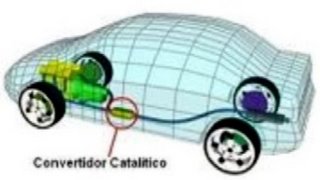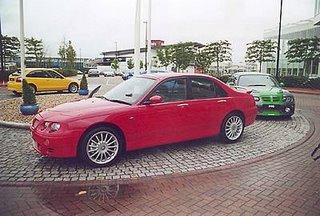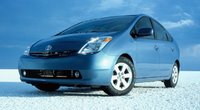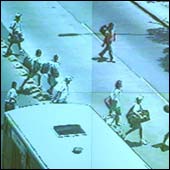
Hydrocarbons (compounds formed by hydrogen and carbon ). Vary widely, from yellow and black, viscous liquid. These differences are due to relations between the types of hydrocarbons. is a non-renewable natural resource , and now also is the main source of energy in developed countries. This mixture of hydrocarbons appears generally associated with large bubbles natural gas in deposits who have been locked for thousands of years underground, covered by layers upper crust.
Its likely origin is in the accumulation of enormous amounts of debris prehistoric animals of marine and terrestrial plant. Over millions of years, mixed with sediments under the intense action of the compression and heat generated is transformed into oil and gas . This oil and gas, shift, happens to permeate rocks more porous and permeable and accumulates to form a pocket of oil, which often is between a gas bag and a bag of salt water. From there the oil and gas can be extracted by drilling and pumped storage prior to its refining .
According to this theory, oil is a mixture of hydrocarbons of high thermodynamic stability formed from non-biological sources of hydrocarbons located deep in the Earth's mantle. At depths of hundreds of miles of coal deposits are a mixture of hydrocarbon molecules. Lighter molecules, mainly methane, up through the pore spaces of the mantle. When this mixture passes through areas inhabited by primitive bacteria, it becomes an excellent food for them, who eat and become heavier hydrocarbons. It has been discovered microbial life to 4.2 kilometers deep in Alaska and 5.2 kilometers deep in Sweden . It has been discovered that microbial life Yellowstone National Park is based on hydrogen metabolism. They have discovered molecules of biological origin in many geological deposits of hydrocarbons, which are thought to be due to surface sources due to the difficulty of growing the thermophilic bacteria. These biomarkers, the more is known about bacterial chemistry, more are believed to be due to their action.
The geo-hopanoides, called the most abundant natural products on Earth, were believed to be indicators of oil derived from lichens and ferns, but is now thought to form by the action of various bacteria, including also the archaea. Some metals, especially the nickel and vanadium , but also cadmium, arsenic the the lead, the mercury , among others, are associated with oil and theory help mantle origin. Oil is extracted by drilling a hole on site . If the pressure of the gas bubble is sufficient natural force oil out through the hole that connects through a network of pipelines to its storage, transport by tanker and refining . During the life of the reservoir, the pressure drop and will need to use other techniques for extracting oil. These techniques include extraction by pumps, water injection or gas injection, among others. The technical and financial measure is a barrel of oil corresponding to 159 liters of oil.
chemical components oil is separated and obtained by distillation by process of refinement . From it are extracted various products, including: propane and butane , gasoline, kerosene , diesel , lubricating oils, asphalt , coking coal, etc. All these products, low solubility. Given the fundamental importance for the manufacturing industry and transport, the oil price increase may be responsible for large variations in local economies and creates a strong impact on the global economy.
The oil industry classifies crude oil by place of origin (eg, "West Texas Intermediate" or "Brent") and related to its density or viscosity ("light", "medium" or "heavy" or as graduation API, American Petroleum Institute), the refiners also classified as "sweet", which means it contains relatively little sulfur, and "acid", which contains higher amounts of sulfur and, therefore, will require more refining operations to meet the current specifications for refined products.
If extraction continues at the same pace as in 2002 Unless it is to find new deposits, the world's reserves would last approximately 42 years. It is estimated that there are tons unas143.000 billion. There are between 6.8 and 7.2 barrels of oil per ton, depending on the density and quality of oil. Therefore, oil reserves are estimated between 970 and 1003 billion barrels of oil.
However, the limits of the reserves could be even closer if one takes into account forecast models with increased consumption as has been the norm throughout the last century. New oil discoveries have declined dramatically in recent decades becoming untenable for long high current extraction levels not to mention that should be pursued to cater successfully to the thirsty Asian consumers. On the other hand, most major world reserves have gone into decline and only those of Middle Eastern maintain sustained growth but increasingly waning. It is expected that even these fields enter decline towards 2010 which will cause the entire world production decreased inevitably leading to greater energy crisis has ever seen the industrialized world.
According
Hubbert peak theory , updated with recent data by the Association for the Study of Peak Oil, the beginning of this decline should begin the year 2007 . The Hubbert peak theory, also known as peak oil, is an influential theory about the rate of long-term depletion oil and other fossil fuels . He predicts that world oil production will reach its peak and then decline as fast as it grew, highlighting the fact that the limiting factor for oil extraction is the energy required and no economic cost. Although still controversial, this theory is widely accepted among the scientific community and the oil industry. The debate is not whether there will be a peak oil but when it will happen, since it is clear that oil is a finite and non-renewable short time scales so that at one time or another will reach the withdrawal limit . This depends on the possible discovery of new reserves, increasing efficiency of existing fields, deep extraction or exploitation of new forms of unconventional oil. The exact year of peak can not be determined until it has happened. Based on current production data, the Association for the Study of Peak Oil and Gas (ASPO in English), believes that peak oil will occur in 2007 , being that of natural gas few years later. On the contrary, more optimistic estimates show reserves for at least 100 years.
This implies important consequences for developing countries that rely heavily on cheap oil and abundant, especially for transport the agriculture, the chemical and domestic heating. The theory is named after the geophysicist M. King Hubbert, who correctly predicted the production peak American with fifteen years in advance. Much of the oil industry and automobiles said Hubbert's theory is false or at least, the ignored and hidden. Some critics Economists say the shortages motivate the search for new discoveries and reserves will be increased above what Hubbert predicted. But even the most optimistic version of the limited oil resources put a deadline on the cheap extraction of that resource. Nobody seems to deny the existence of a production ceiling but few governments and businesses so far have mentioned openly. Among these include the American multinational ChevronTexaco who have launched recently, the advertising campaign to educate the American public of the need to react to the impending oil depletion . Also recently the English company Repsol-YPF has already spoken publicly at a conference of the issue using the same graphics of ASPO.
A not so apocalyptic scenario is a slower depletion rate and a slow transition to alternative energies which could cause a major slowdown in the economy, what is known recession or depression due to high energy prices. Historically there is a close correlation between the increases of fuel prices and economic downturns. The inflation is also linked to increases in the price of oil. Despite all economists disagree about the intensity and causes of this association. The world economy could become less dependent on oil than during the first moments of the crisis. In comparison, the recessions of the early 1970's and early 1980's were due to a relatively brief period in which energy availability waned substantially, the possible future of a rising real prices due to depletion of resources predicts a recession much deeper and longer than those experienced so far. See Energy crisis .
A decline in fossil fuels would also affect developing countries in the Third World unattainable as it would the claims of many of these nations have the comforts and high standard of living of United States and Europe . The pessimists believe that the limited resources exacerbate the differences and clashes between the rich north and poor south while others, more optimistic, they say that the problems would only be temporary as it gives way to the use of alternative energy.
A modest rise in oil prices generally stimulate increased fuel efficiency in transport. Some believe that this would delay and mitigate the impact of a severe shortage of oil. For example, some governments may order a minimum efficiency standard for automobiles. Change could also encourage other forms of transport were not directly dependent on oil. The electricity , in particular, can be generated from any number of different sources. This could encourage the use of transport such as railways , trams, trolleybuses and hybrid vehicles to the detriment of the media totally dependent on traditional fuels such as trucks, the cars and aircraft. For short trips of 5 to 10 km the bike could become the preferred medium for long journeys and the combination of bicycles and trains would be the most economical solution. Here
there is a contribution of:
Edgar Ocampo Tellez. Researcher in the area of \u200b\u200benergy and oil, Architect UNAM, 42, Mexico. Engineering-oriented project. Consultant, evaluation of the consumer market in Campeche. Basic engineering projects for PEMEX. Member of The Association for the Study of Energy Resources (AEREN). Writer of "Tribuna de Campeche," Ecology and Energy "," Energy Debate "and correspondent for Mexico's portal. With whom I maintain a close relationship of research and consultations on the World of Oil.
Pablo Ramírez T (PD)









